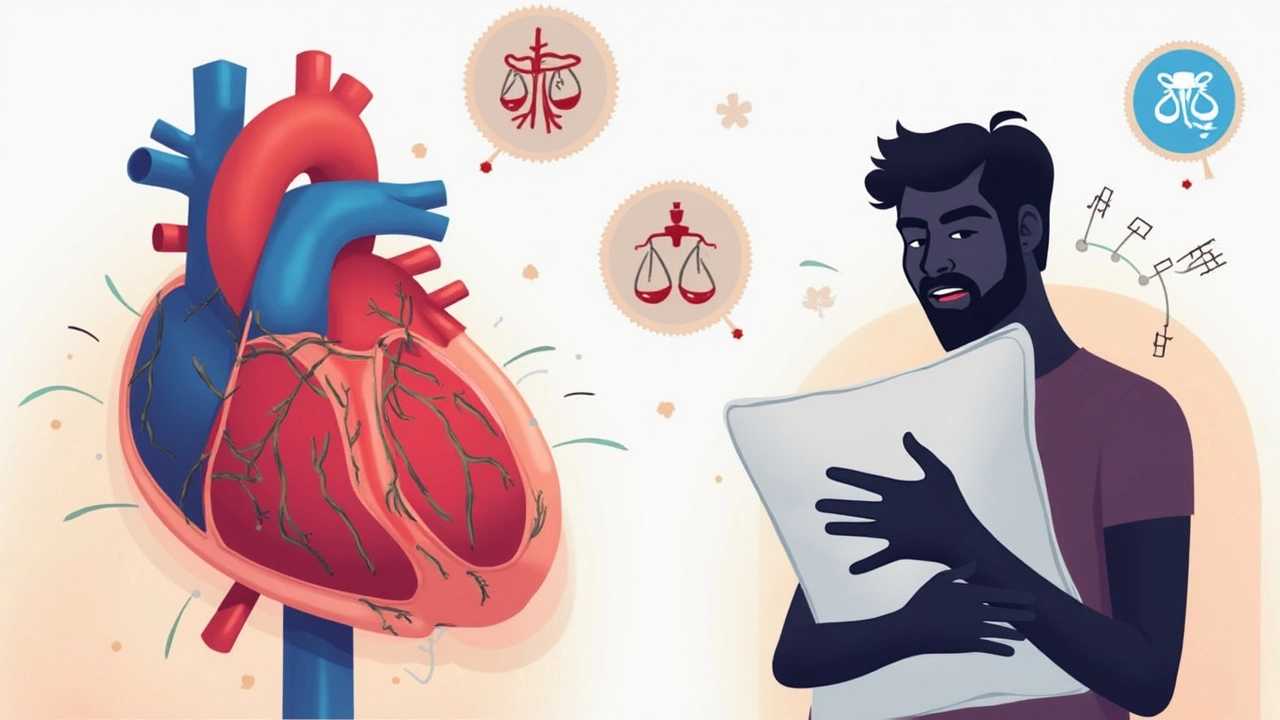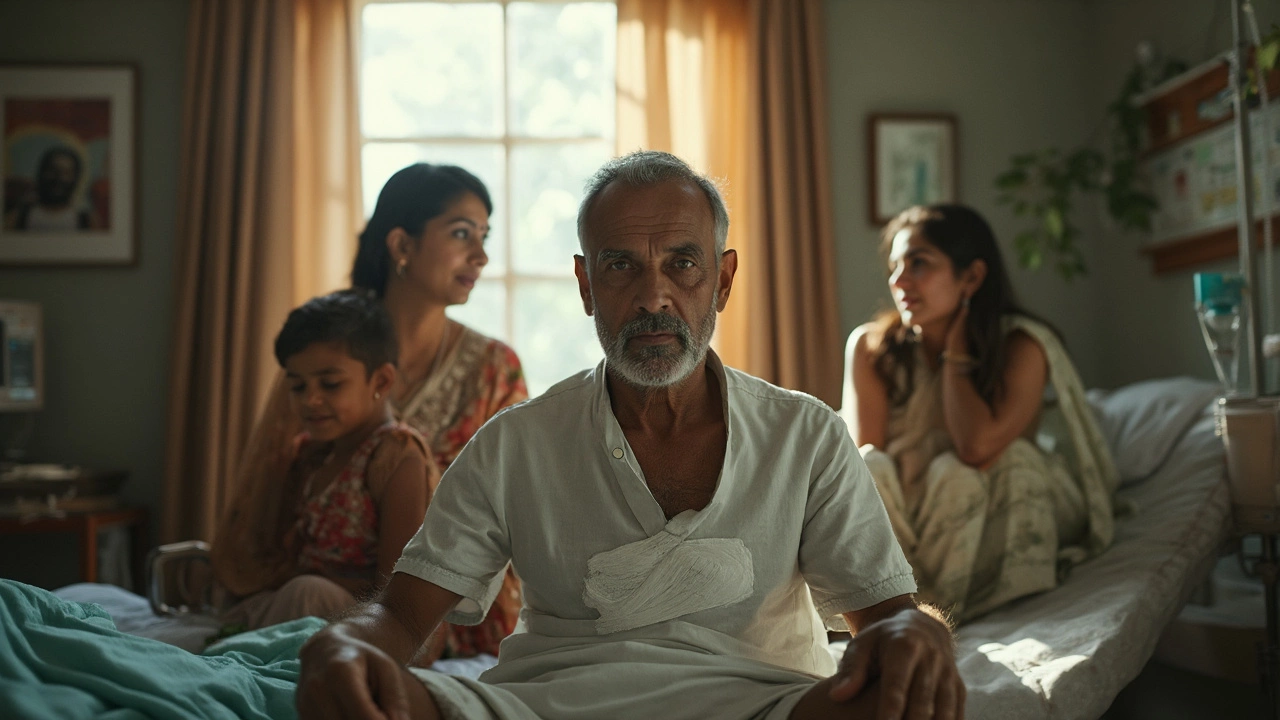Crack open someone’s chest, stop the heart, and get to work with surgical tools—we’re not talking about a walk in the park. Heart surgery, especially the open-heart kind where doctors split the breastbone right down the middle, holds the title for the most painful major surgery out there. The pain isn’t just background noise—it can slam you like a freight train for days or even weeks.
Let’s be real: No one signs up for heart surgery expecting a comfy ride. The soreness, stiffness, and gnawing aches hit hard, mostly because surgeons literally saw through the chest and then wire it back together. Even sneezing feels like your body’s trying to split in half. If you’ve seen someone shuffle after surgery hugging a pillow to their chest, that isn’t for comfort—it’s the only way to cough or move without feeling like you’re coming apart.
But here’s the good news: Surgeons and nurses do have tricks to help you cope with that pain. Some simple hacks—like staying ahead of the pain with meds, using heart-shaped pillows to brace the chest, and following movement do’s and don’ts—make a real difference. If you or someone you know is staring down heart surgery, knowing what to expect and how to handle those brutal first weeks can make things much less terrifying.
- Why Heart Surgery Hurts So Much
- The Absolute Worst: Open Heart Surgery
- What Patients Really Say About the Pain
- The Science of Post-Surgery Pain
- Tips to Handle the Worst Days
- How to Bounce Back Faster
Why Heart Surgery Hurts So Much
If you’re curious why heart surgery is notorious for pain, the basic answer is pretty blunt: the chest is one of the toughest spots on your body to mess with. Surgeons literally saw through the breastbone—called the sternum—to get access to your heart. Afterward, they use metal wires to put the bone back together, but it doesn’t heal overnight. That’s a huge deal because every time you move your upper body, cough, or even take a deep breath, that spot is stressed.
The body treats this area like a construction zone. Pain sensors in your chest and ribs send alerts constantly, especially in the first couple of weeks after surgery. Nerves running along your ribs get stretched or, in some cases, even cut. Swelling and bruising ramp things up even more.
Got numbers? Take this in: about 75% of people report moderate to severe pain for at least the first week after open-heart surgery. That’s in spite of pain meds. Also, most patients can’t sleep well—one study found that around 80% struggle with sleep during the first month after surgery because of pain and inability to get comfortable.
| Issue | % of Patients Affected |
|---|---|
| Pain (moderate to severe) | 75% |
| Sleep Problems | 80% |
| Limited Arm/Chest Movement | 65% |
Bottom line: when you hear people complain about the pain after heart surgery, they’re not exaggerating. Every sneeze feels brutal. Getting out of bed is a test of willpower. So, what actually causes the pain? It’s not just the incision. The deep muscles, nerves, rib cages, and even the cartilage between your ribs all get involved. There’s just no way to avoid it completely—but knowing the facts helps you prepare, and that preparation goes a long way.
The Absolute Worst: Open Heart Surgery
If anyone asks about the most painful surgery out there, most doctors point straight to open heart surgery. This procedure isn’t just tough because of what’s at stake—it literally means sawing through your breastbone, prying open the ribcage, and exposing the heart to fix major problems like a blocked artery or a faulty valve. That’s as heavy-duty as surgery gets.
It’s called a "sternotomy" when the breastbone gets split. After the repair job on the heart, surgeons use strong metal wires to tie the bone back together. That’s why recovery aches like nothing else. Every deep breath, laugh, sneeze, or cough sends a shock through your ribcage. Some folks say it feels like their chest got hit by a truck for weeks. And unlike a broken arm, you can’t just let your chest rest—every move you make uses those muscles.
Let’s break down what happens:
- The incision runs straight down the center of your chest, usually 6-10 inches long.
- Surgeons use a rib-spreader to get to the heart, which can make the entire chest wall feel battered afterward.
- After the heart work is done, the breastbone is wired together, but it takes 6-8 weeks to heal fully.
The pain isn’t only about the cut—nerve endings in the chest can be slow to settle down, causing sharp, burning aches. And because the surgery interrupts basic muscle connections, even small actions can fire up the pain.
One little-known fact: Pain often gets worse the second or third day after surgery, as the heavy painkillers from the operating room leave your system. That’s why doctors always warn patients not to "tough it out" in those first days. Take pain meds on schedule—don’t wait until things get unbearable.
There are other heart surgeries that use small incisions or work between the ribs, but nothing comes close to the brute force of full-on open heart surgery. That’s why this one always lands on top if you’re searching for the most painful surgery tied to your heart.
What Patients Really Say About the Pain
When you talk to folks who’ve actually gone through heart surgery, you start hearing some blunt truths. Right after waking up, most describe a sharp, burning pain right in the middle of their chest. Some compare it to getting hit by a truck or trying to breathe with someone sitting on them. Sleep isn’t easy—every toss and turn reminds you that your chest isn’t quite in one piece yet.
Many people say the pain ramps up when you try to cough, sneeze, or even laugh. That’s why most hospitals hand out those stiff, heart-shaped pillows. Patients swear they help—hugging them against your chest makes moving a little less brutal. Don’t expect to just “power through” on day one; the reality is, even simple things like getting out of bed or brushing your teeth can feel like a major workout.
Pain medicine can only do so much. Some patients say they felt sore for weeks, and the skin around the incision stayed numb or tingly for months. A lot of people report muscle aches in the shoulders and upper back, too. If you ask them to rate the pain, most say it’s much worse than any broken bone or normal surgery elsewhere on the body.
But here’s the upside: nearly everyone also says that the worst pain passes after the first week or so. Moving around (even a bit) every day, keeping up with breathing exercises, and listening to the nurses really helps—a lot more than just lying in bed hoping for the best.

The Science of Post-Surgery Pain
Heart surgery pain isn’t just in your head—there’s a whole science behind why it stings so much. The main culprit is the way surgeons get to your ticker, which usually means cracking open the sternum (that’s your breastbone), spreading the ribs, and messing with the nerves all around your chest. That’s a lot of trauma in one go, and your body reacts by going into full-on repair mode.
When your chest is cut open, nerves running along the ribs and inside the breastbone get stretched, poked, or even cut. Once the beating heart is restarted and everything’s stitched up, these injured nerves send signals straight to your brain saying “Ouch, something’s wrong!” That’s why you often feel sharp, throbbing, or even weird burning sensations across your chest and upper back. Some people get what’s called “chest wall pain syndrome,” which can last for weeks or, in rare cases, months.
Then there’s inflammation. Your body kicks up the level of all sorts of chemicals called cytokines that trigger swelling, redness, and more pain. Plus, the wires used to close up the breastbone pull on bone and muscle every time you move, cough, or even take a deep breath. It’s no surprise that the first few days after heart surgery are often rated “10 out of 10” on the pain scale.
Medically speaking, pain after heart surgery usually follows a pattern. Here’s how experts break it down:
| Time After Surgery | Average Reported Pain (0-10) | Top Complaints |
|---|---|---|
| Day 1-3 | 7-10 | Chest, back, breathing hurts |
| Days 4-7 | 5-7 | Muscle aches, incision soreness |
| Week 2+ | 2-5 | Stiffness, nerve twinges |
Besides the physical stuff, there are other things that make pain worse—like anxiety and not sleeping well. Studies have found patients who worry a lot before surgery often say their pain feels more intense afterward. If you’re already in pain from your bad heart before surgery, that also bumps up your risk of tougher recovery pain.
So, why talk about the science? Because knowing exactly what your body’s going through helps you ask smarter questions, stay on top of your meds, and isn’t just about “toughing it out.” Pain is part of healing, and understanding what’s normal can stop you from freaking out if recovery feels harder than you expected.
Tips to Handle the Worst Days
The days right after heart surgery can test your patience in ways you never imagined. Managing pain isn’t just about toughing it out. You need real strategies, or those first weeks will drag you down faster than you think.
First up, don’t skip your meds or try to be a hero. Doctors usually set up a painkiller routine for a reason—fall behind, and it’s ten times harder to catch up. Set alarms if you have to. Some hospitals use patient-controlled analgesia (PCA) pumps so you can give yourself a dose at the press of a button—a game changer when the pain tries to creep back in.
Next, always use that pillow—seriously. Any time you laugh, cough, or even move, hug it to your chest. This isn’t just about comfort. Pressing the pillow splints your healing breastbone and keeps everything stable, so you don’t feel like your ribs are going to explode.
Getting up and moving around might sound like punishment, but lying in bed only makes things worse. Nurses will probably make you walk the halls within a day or two. Staying active helps clear your lungs and keeps your muscles from going limp. You don’t have to run laps—just shuffling down the hallway is enough to keep complications low.
- Drink water—they’re not kidding when they say dehydration makes pain worse and can slow healing.
- Ask for ice packs or heat packs if things feel extra stiff or sore, but double-check with the nurse so you don’t mess up your stitches.
- Track your pain. If something suddenly gets sharper or different, flag it. Sometimes, pain can mean a problem brewing under the surface.
- Keep the room set just right—temperature swings can make you feel miserable, so ask for an extra blanket or crank up the A/C if needed.
Finally, lean on support—talk to family or friends, even if you just complain about the hospital TV. The tough moments pass quicker when you’re not handling them alone. You might feel overwhelmed after heart surgery, but each tiny thing you do helps stack the odds in your favor for a smoother recovery.
How to Bounce Back Faster
The first days after heart surgery are tough, but getting up and moving as soon as possible is key. Research shows that people who get out of bed and start walking—even just a little—recover better and go home sooner. Lying around does way more harm than good. If you want a faster comeback, you’ll need a game plan that hits all the basics: movement, food, sleep, and pain control.
- Movement matters. Taking a short walk in the hospital hallway might sound simple, but it gets your blood flowing and helps your lungs clear out gunk. Aim for a few steps the first day, and try to walk a little farther every day. Your care team will show you safe ways to move that keep your chest stable.
- Don’t skip your breathing exercises. Those plastic “incentive spirometers” look silly, but they lower your odds of getting pneumonia. Use yours every hour while you’re awake, at least for the first week.
- Stick to your meds. Skipping pain meds can actually slow healing. Take what your doctor gives you so you can move around and do your rehab exercises.
- Eat like you mean it. Your body needs protein and calories to heal. Even if you’re not super hungry, getting in enough food—especially lean meat, eggs, dairy, nuts, and beans—will help you rebuild muscle and recover faster.
- Don’t shortchange your sleep. A good night’s rest is when healing magic happens. Try to stick to a sleep schedule, skip naps late in the day, and use pillows for comfy positions.
Here's a quick look at how different habits can help you improve after heart surgery:
| Activity | Benefit | Recommended Frequency |
|---|---|---|
| Walking | Cuts risk of blood clots, helps mood | 5-6 times a day (short walks) |
| Breathing exercises | Lowers risk of lung infections | 10 breaths/hour while awake |
| Taking pain meds | Helps you move and sleep | As prescribed |
| High-protein meals | Speeds up tissue healing | Every meal/snack |
| Healthy sleep | Boosts healing | 7-9 hours/night |
If you stick to these steps, you’re much more likely to bounce back fast. Don’t ignore your care team—they’ve seen what works, and they know how to spot trouble early. And one more thing: recovery is a marathon, not a sprint. Celebrate each little win along the way.

 Essential Advice: Navigating Conversations with Your Pain Management Doctor
Essential Advice: Navigating Conversations with Your Pain Management Doctor
 Understanding Organ Shutdown in Terminal Cancer: First Signs and Steps
Understanding Organ Shutdown in Terminal Cancer: First Signs and Steps
 How Did Kelly Clarkson Lose All Her Weight? Real Strategies Behind Her Transformation
How Did Kelly Clarkson Lose All Her Weight? Real Strategies Behind Her Transformation
 Essential Annual Blood Tests for Optimal Health
Essential Annual Blood Tests for Optimal Health
 Top Vitamins That Grow Hair Fastest: Science‑Backed Guide
Top Vitamins That Grow Hair Fastest: Science‑Backed Guide